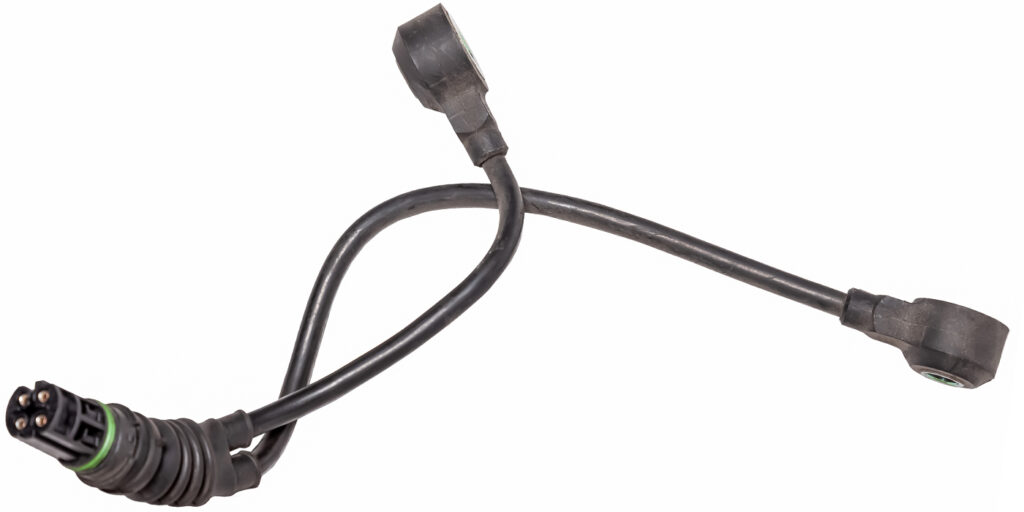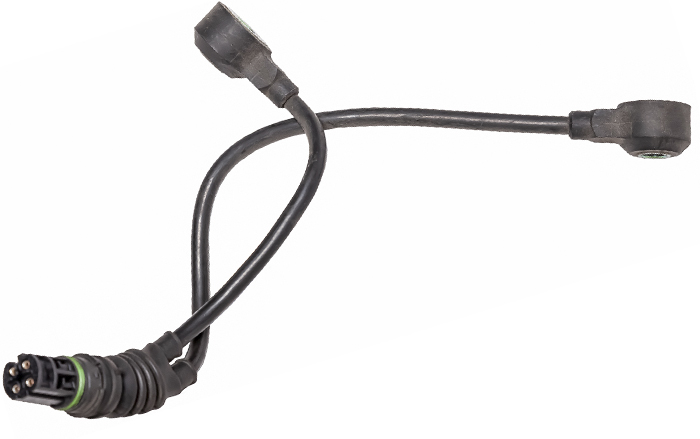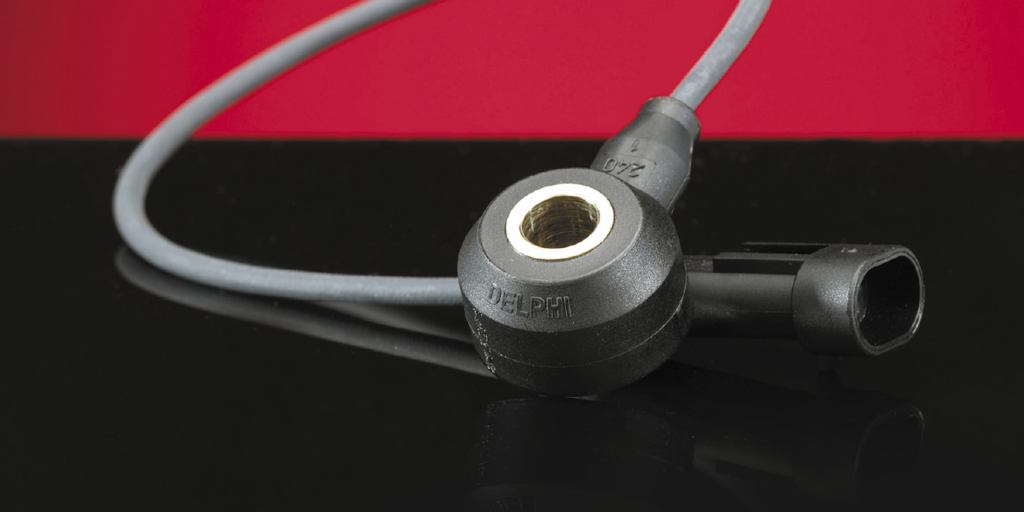A knock sensor is a piezoelectric accelerometer that acts as a microphone on the engine. It converts vibrations into an alternating current (AC) signal. When the crystal inside the sensor is vibrated, it produces an AC voltage. The greater the vibration or shock, the higher the voltage and frequency.
The ECM can look at the output from the knock sensor and determine if something is going wrong in the combustion chamber and take action, like changing the ignition timing or adding fuel.
The knock sensor is not the only sensor responsible for detecting engine knock. The ECM looks at the crank angle sensor data to determine at which cylinder the event is taking place and whether the crankshaft had a sudden change in speed. That way, the ECM can determine if the driver just hit a pothole, or if a knock occurred. It can also identify if the event happened before or after top dead center.
Testing
If you’re using a meter, set it to AC volts. If you are using a scope, make sure the AC filtering is turned off. If you are testing the sensor on the vehicle, you need to access the connector. Knock sensors have only two wires.
Knock sensors are mounted on the block near the base of the cylinder head. On an inline engine, the sensor is easy to access. On V6 and V8 engines, the knock sensor might be in the valley of the engine under the intake manifold.
There are two schools of thought for testing. If the sensor is out in the open, you can use a blunt chisel and hammer and strike the area around the knock sensor.
If the sensor is inaccessible, you can run the engine and pull the fuse for the fuel pump and let the engine stall. The lean conditions might produce an engine knock. But, this type of testing can be hard on an engine.
Knock sensors rarely degrade; they typically fail and will not produce a signal no matter how hard you hit them. When you are looking at a meter, you will see a change of 0.06V when striking around the sensor. Using the min/max feature, you might see higher voltages. You can also check the amount of resistance across the sensor and verify the value with the service information. A scope can provide you with a better picture of what the sensor is doing, even while the engine is running.
Some engine management systems will send out a brief bias voltage signal to check the condition of the circuit when the vehicle is started. If the circuit has higher-than-normal resistance due to corrosion or a bad connection, the voltage will drop, and a code will be set for low voltage. The ECM also knows what types of voltage the knock sensor should produce during startup and idle, and it will set a code if it does not see the correct value.
If a knock sensor-related code is set, the ECM may use a more conservative fuel map or even limit engine loads and RPM. This is to protect the engine and safeguard against possible damage to the combustion chamber.















